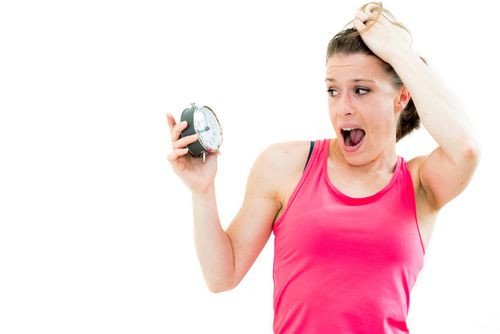Daylight Saving Time 2014: 5 Healthy Tips On How To Spring Forward, Without Feeling Tired

On Sunday at 2 a.m., most of us will roll our clocks forward one hour into daylight savings time to spring forward into the new dark-light cycle. A 23-hour Sunday means a sleepy Monday for everyone, especially those who aren’t morning people, as we are getting less sunlight in the morning and more in the evening. While it takes one day to adjust for each hour of time change, there are healthy ways to ensure a smooth transition without feeling tired.
1. Soak Up The Sun During Waking Hours
After growing tired of the cold winter days, and leaving the office in the dark, one of the best ways to reset your internal clock is to soak up the sun during the day. Exposing yourself to light during waking hours will help suppress the sleep-inducing hormone melatonin. It is important to avoid exposure to bright light when it’s dark out. Melatonin production can be thrown off from sleep deprivation during the day or too much exposure to artificial light at night, especially from electronic devices. If you use the bathroom in the middle of the night, try not to turn the light on.
2. A Low Dose of Melatonin
A low dose of melatonin — less than 0.3 milligrams — starting in the afternoon, Friday through Monday, could help mediate the effects of daylight savings time and help sync the sleep-wake and light-dark cycles. The National Sleep Foundation says that since melatonin is a hormone that is part of the human sleep-wake cycle, taking it in the form of a pill will aid in falling asleep faster or staying asleep longer. The hormone is produced in the pea-sized pineal gland, located just above the middle of the brain. Though it is inactive during the day, it is “turned on” by the supra-chiasmatic nucleus at night.
3. Exercise In The Sunlight Before 5 p.m. Daily
A brisk walk or run in the sunlight can make it easier for people to adjust to daylight savings time. Sunlight and exercise can boost serotonin production, and its release, in the brain, says Psychology Today. This can offset the effects of daylight savings time. The Centers for Disease Control and Prevention recommends going for a 10-minute brisk walk, three times a day, five days a week, to meet 150 minutes moderate-intensity activity every week, along with muscle-strengthening exercises.
4. Avoid Caffeine After Noon & Limit Alcohol Consumption After Dinner
Although on Monday you may feel the need to indulge in caffeine more so than usual, it’s best to avoid it after noon. A study in the Journal of Clinical Sleep Medicine found that 400 milligrams of caffeine consumption even six hours before bedtime can have significant and disruptive effects on sleep. With regards to alcohol, it can disrupt your sleeping pattern, and prevent you from achieving a deep sleep. If you want to consume alcohol, make sure it’s at least an hour before bed. According to SUNY Potsdam, your body actually takes about an hour per drink to process the alcohol.
5. Follow A Consistent Bedtime Schedule, Even On The Weekends
Waking up and falling asleep at the same time every night will help strengthen circadian function, and help you fall asleep easily at night. According to the Division of Sleep Medicine at Harvard Medical School and WGBH Educational Foundation, the body clock adjusts to schedule changes slowly. For example, people who switch between day and night work may find that it takes several days to feel as alert or get a good night’s, when compared to someone who has a consistent schedule.
These healthy tips will help you spring forward into daylight savings without feeling tired.



























